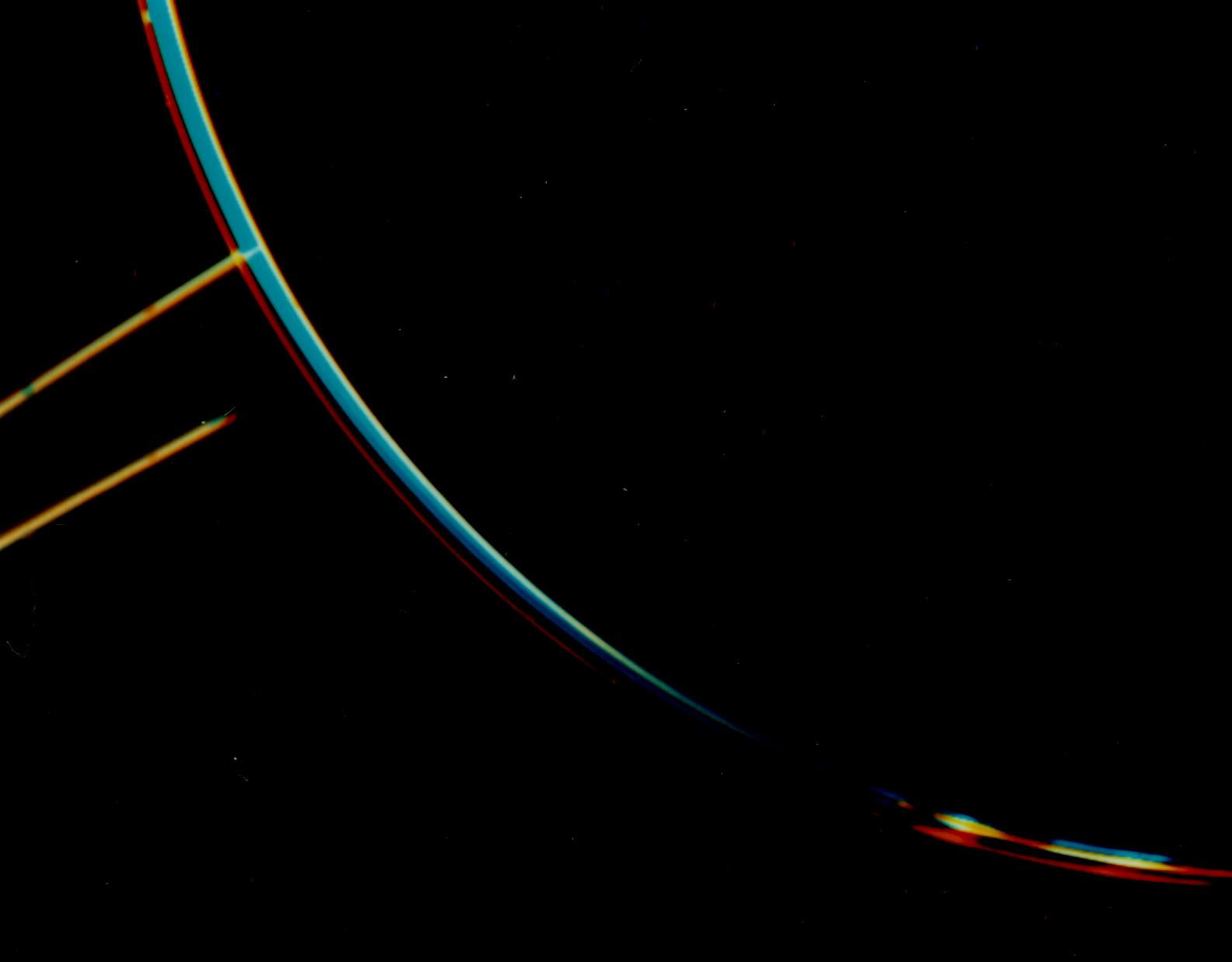It's time once again for another "Where In The Universe" challenge. See if you can guess where in our vast universe this picture was taken. Give yourself extra points if you can name the spacecraft responsible for the image, too. We've been getting a lot of positive feedback on this challenge, and readers seem to enjoy this weekly test of their visual space-themed recognition skills. And we've been enjoying the reader comments on their successful and the not-so-successful identification of these space images. We've learned so much about the universe by the images taken by all the different spacecraft, and scientists can refer again and again images to study the fine details. And sometimes, they see something they didn't even know was there.
Alright, its time to make your guess, and no peeking below before your guess has been made.
This is an image of Jupiter's rings, taken by the Voyager 2 spacecraft, from the dark side of Jupiter. The faint ring system is shown in this color composite as two light orange lines protruding from the left side of Jupiter's limb. This picture was taken in Jupiter's shadow through orange and violet filters. Voyager 2 was at a range of 1,450,000 kilometers (900,000 miles), and about 2 degrees below the plane of the ring.
We didn't know Jupiter had rings until the Voyagers found them in 1979. Jupiter's rings are very dark, unlike Saturn's rings which contain lots of ice and are very reflective. Not until the Galileo mission which orbited Jupiter from 1995 to 2003, did scientists figure out the rings were made of dust and materials kicked up by meteoroids slamming into Jupiter's inner moons.
Voyager 1 flew by Jupiter on March 5, 1979, taking more than 18,000 images of planet and its moons. Voyager 2 flew by Jupiter on July 9, 1979, taking about the same number. Between the two Voyager spacecraft, three new moons and a thin, dark ring were discovered. Voyager images of Jupiter's moon Io revealed active volcanoes, the first ever discovered on another body besides Earth.
How did you do on this challenge?
 Universe Today
Universe Today
